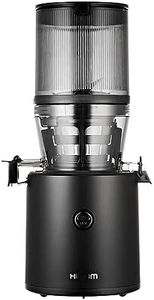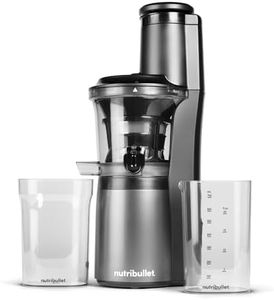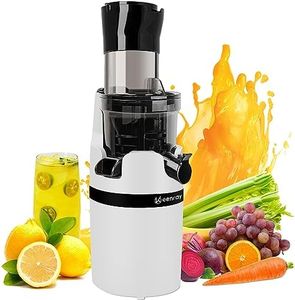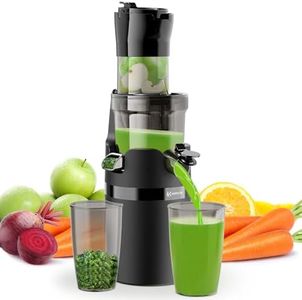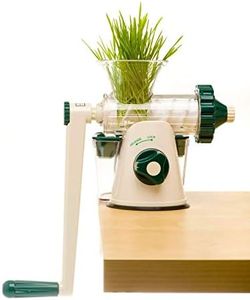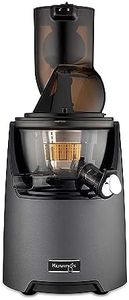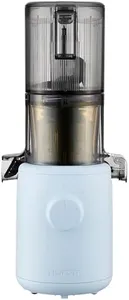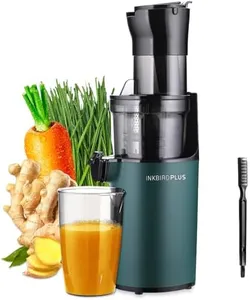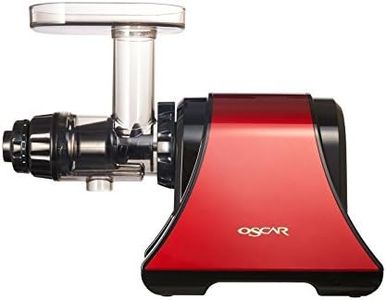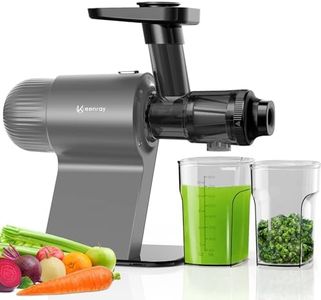We Use CookiesWe use cookies to enhance the security, performance,
functionality and for analytical and promotional activities. By continuing to browse this site you
are agreeing to our privacy policy
10 Best Wheatgrass Juicers
From leading brands and best sellers available on the web.Buying Guide for the Best Wheatgrass Juicers
Choosing the right wheatgrass juicer can make a huge difference in how often you enjoy fresh wheatgrass juice and how easy it is to prepare. The best juicer for you depends on how much wheatgrass you want to juice, how much time you want to spend, and how important convenience and ease of cleaning are for you. Understanding a few key specifications will help you select a juicer that fits your lifestyle and keeps you motivated to use it regularly.Juicer Type (Manual vs. Electric)The juicer type refers to whether the device is powered by hand (manual) or by electricity (electric). Manual juicers require you to turn a handle to squeeze juice from the wheatgrass, making them quiet, portable, and easy to use anywhere, but they need physical effort. Electric juicers automate the process and can handle larger amounts quickly, but they can be bulkier and noisier. If you plan to juice small amounts and like the idea of juicing on the go or outdoors, a manual juicer might be right for you. If you’re juicing for multiple people or want a quick, hands-free experience, consider an electric model.
Material QualityThis refers to what the juicer is made of, such as plastic, stainless steel, or a combination of materials. High-quality materials like stainless steel are durable, easy to clean, and more resistant to rust, especially important with wheatgrass because its juice is somewhat corrosive. Cheaper plastics might not last as long and can sometimes affect the taste. If you value a product that lasts longer and is easy to maintain, look for one made with food-grade stainless steel or durable, BPA-free plastics.
Juice YieldJuice yield means how much juice you can extract from a given amount of wheatgrass. A juicer with a higher yield wastes less, giving you more juice from the same amount of grass. Some juicers are better at squeezing out every drop, while others leave the pulp too wet. If you want to get the most out of your wheatgrass (saving money and reducing waste), choose a juicer known for high juice yield.
Ease of CleaningThis specification tells you how simple it is to take apart and clean the juicer’s parts after use. Wheatgrass can be especially fibrous and can clog up complex machines, making cleaning a hassle. Some juicers have only a few parts which are easy to rinse, while others could have small crevices or need special brushes. If you want to juice often and quickly, choose a model with fewer, easy-to-clean parts to avoid frustration and ensure you keep using it.
Size and PortabilitySize and portability refer to how big or heavy the juicer is, and how easy it is to move or store. Manual juicers are usually lighter and more compact, so they’re easier to take with you or tuck away in a small kitchen. Electric juicers can be larger and need counter space and a plug. If you have limited space or want to travel with your juicer, a smaller and lighter model is ideal; if you have a dedicated spot at home, size might be less important.
Noise LevelNoise level indicates how loud a juicer is when it's running. Manual juicers are nearly silent since they don't use motors, while electric ones can range from relatively quiet to quite loud. If you want to juice early in the morning or in a shared space without disturbing others, consider how much noise is acceptable for you.



